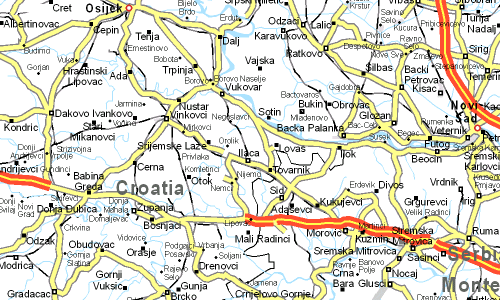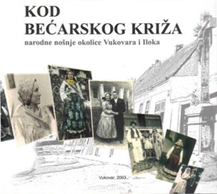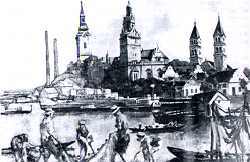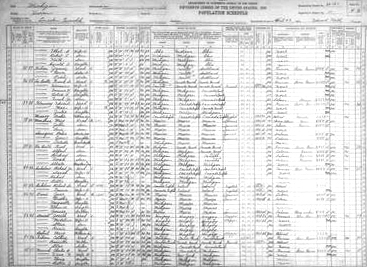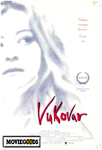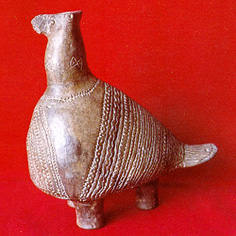Archdiocesan
Archives
Djakovo
Contact
the archive (there should be a hacek symbol atop both the "s"
& the "z" in the name):
Drazen
Kusen
Biskupski Ordinarijat
Strossmayerov trg 6
HR-31400
Djakovo
CROATIA
See
this article at Geanealogy.net:
http://www.genealogienetz.de/reg/ESE/dsarch.html#stuttgart:
The
archdiocese includes all of Syrmia (Szerem County), including
portions in both present-day Croatia and Serbia. Reports are that
the archive is responsive and that they are willing to forward any
queries to the local parish churches. Only baptism registers
survive at most churches, although some have burial registers back
to 1900. Successful queries have been written in Croatian and
English (see sample
letters, included two
International Reply Coupons and cash to (two $5 bills) defray
expenses. Response times may vary.
Churches
1828
Hungarian Property Census for SZEREM MEGYE includes Sotin
TOVARNIK
DEANERY www.hbk.hr/crkve/etekstp/edjakovo/edjakovo.html
DURING
THE WAR IN CROATIA DAMAGED CHURCH PROPETY IN THE DJAKOVO-SRIJEM
DIOCESE www.hbk.hr/crkve/etekstp/edjakovo/edjakovo.html
SOTIN
(Sotin Parish), votive church: MARY THE HELPER (MARIJA POMOCNICA)
The church is a cultural monument. During
August - December 1991, members of the rebel Serbian forces and
the Yugoslav National Army destroyed the church and rectory.
VUKOVAR
(Vukovar Parish), Franciscan monastery and church: SS. PHILIP AND
JAMES (SV. FILIP I JAKOV) www.dvhh.org/crkve/vukovar/eindexkfj.html
The
monastery complex dates from the 18th century and is a cultural
monument. After September 19, 1991, members of the rebel Serbian
forces and the Yugoslav National Army completely demolished the
church. They looted and destroyed the inventory.
VUKOVAR
(Vukovar Parish), chapel: ST. ROCH (SV. ROK)
www.dvhh.org/crkve/vukovar/eindexk.html
During
September - November 1991, members of the rebel Serbian forces and
the Yugoslav National Army completely demolished the chapel and
destroyed the inventory.
VUKOVAR
(Vukovar Parish), old cemetery and cemetery chapel of family Eltz
The chapel was built in the 19th century and is a cultural
monument. During September - November 1991, members of the rebel
Serbian forces and the Yugoslav National Army severely damaged the
cemetery and completely destroyed the chapel with the entire
inventory.
VUKOVAR
(Vukovar Parish), convent and chapel of THE SISTERS OF THE HOLY
CROSS (SESTRE SVETOG KRIZA)
During September - November
1991, members of the rebel Serbian forces and the Yugoslav
National Army completely destroyed the convent and chapel.
VUKOVAR
(Vukovar Parish), municipal cemetery: BULGARIAN CEMETERY (BUGARSKO
GROBLJE)
During September - November 1991, members of the
rebel Serbian forces and the Yugoslav National Army devastated the
cemetery.
VUKOVAR
(Vukovar Parish), new cemetery: DUBRAVA
During September -
November 1991, members of the rebel Serbian forces and the
Yugoslav National Army devastated the cemetery.
The
diocese of Osjek-polje and Baranja
Sotin
Church
of the Translation of the Relics of Saint Nicholas – built
in 1802; completely renovated in 1968. In August 1991 damaged by
rifle fire from Croatian National Guard.
Barry
S. Marjanovich
Presentations:
O12
CROATIA - DJAKOVO DIOCESE - 1991
DESCRIPTION
OF REPORTED CRIME: Destruction of churches and church
property.
TIME AND LOCATION: 1991; Sotin.
SUMMARY OF
REPORTED CRIME: Mary the Helper of Christians Church (1768,
cultural monument) sustained damage to the belfry and the
roof.
PERPETRATORS: YPA soldiers; members of Serb irregular
units.
SOURCE OF INFORMATION: Publication "Sacral
Institutions on
Target", Croatian Information Centre,
1991, p. 18.
The
History of Srijemske Laze
Croatian
Catholics were the only inhabitants in Laze in the Middle Ages,
who also managed to withstand a hundred and fifty years of Turkish
rule (1526 – 1691). The Roman Catholic parish was situated
in that settlement. Sotin became also subject to the Laze parish,
after its own parish ceased to exist due to the Turkish invasion.
Stories about those days continued until the year 1729, when
Gabrijel Bacic, a provost of the chapter home in Pecs, led his
canon visitation to this area.
Croat
Catholic Ustashi clergy
Here
follows an incomplete list of Croat Roman Catholic clergy that
participated in the atrocities and Holocaust of the
Ustashi regime of
Ante Pavelic. By the end of WW II, 1500 Croat Roman Catholic
clergymen fled Europe in order to escape justice. These were Roman
Catholic priests who murdered Serbs and Jews with their own hands,
incited others to do so or took part in their forced conversions.
ANDERLIC,
Dr. VILKO: Catholic curate in Sotin and a very active Ustasha who
used terror extensively to force Serbs to convert to Catholicism,
threatening those that didn't with death.

